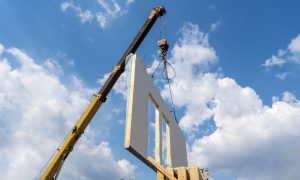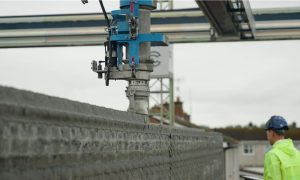Experts: Breaking Down Barriers
Tom Boland, director at Zutec UK, outlines why digitisation is urgently needed for the regional construction industry

The construction industry is known to be unproductive, and it has been this way for decades.
One solution is digitisation, which can drive productivity and profitability. Its advantages span from mobility—no more struggling to keep track of each component of the paper trail—to the Internet of Things and advanced analytics. Cloud-based software can help construction professionals manage the entire construction process digitally, from the design phase through to handover. Further, digitisation minimises errors and risks, and helps professionals to maintain compliance by keeping project records secure and scheduling customised inspections. Such tools also help companies to assess their digital processes when it comes to maintaining building safety standards, as well as meeting decarbonisation goals and shifting to green construction.
Digitisation in the industry is set to improve data and transparency, making it easier for architects, developers, contractors and subcontractors to collaborate and see how every aspect of their project is being managed and how it’s progressing. There are also new tools, such as the Value Toolkit being launched in the UK, which are designed to assess the real value of projects and how they will benefit society, the economy and the environment in the long run, thus completely transforming the way the sector carries out its work.
What are other technologies that need to be embraced by the industry?
While BIM has been around since the 1970s and has increasingly been put into use over the years, newer forms have come into play recently, which are used across the entire life cycle of a building rather than in the design phase alone.
For example, ‘Field BIM’ manages construction data in an information model and uses it to inform accurate construction, operations, or maintenance on site. With this, handheld mobile devices become essential tools in accessing shared information and collaborating in real-time with colleagues at the office. The process saves time, minimises the risk of error, builds trust, ensures coordination, and boosts visibility. When used in conjunction with CDE modules, companies can get the full picture regarding their projects and can streamline everything from design collaboration to accountability and site safety.
Other technology includes inspections protocols and tools—ranging from non-specialist tools such as Zoom and MS Teams, to specialist platforms like Zutec—AI, which is particularly useful when looking at data, patterns and trends for business, VR and AR, which are commonly used at the design stages, but can also be used on site, and drone inspections, which are becoming increasingly commonplace, especially on the QA/QC side of projects.
What are some of the biggest barriers to entry when it comes to digitisation in the industry?
For many years, one of the biggest known barriers to entry when it came to digitisation in construction was cost. However, this barrier has been greatly reduced and access to connectivity has dramatically improved. It’s currently cheaper than ever to bring on board, and run, digital tools.
Along with being more affordable, today’s tools are also smarter, and don’t need total connectivity at all times. For example, with a Field BIM tool, quality and compliance related checklists can be created on site and without an Internet connection.
Another barrier is the large number of people who still have minimal digital skills or are reluctant to adopt them. They worry digitisation will involve a massive change in how they do business and that it will be too complex. This becomes a problem at all levels, such as when major contractors ask subcontractors to use digital tools in their projects—if they don’t have these capabilities, they’ll miss out on jobs.
This barrier is steadily being removed due to a digitally savvy younger generation moving up the career ladder. To continue breaking it down, however, training programmes and regular courses should be offered.
Why is it important to democratise data and can this truly be achieved in the Middle East?
The end principle of any project should be that the client owns the data involved in the construction of their assets. One of the benefits of more transparent use of data is de-risking: if people are recording their actions and are accountable for them, this can drive up standards. Further, one’s digital fingerprints are all over every aspect of the project he or she is involved in, therefore, by sharing data, it will make one’s day-to-day life easier, smoother, and better all around. It will also alleviate the historic problem of construction being adversarial and litigious.
While there may need to be changes around contract law and culture in terms of working with other companies, everyone will benefit from digitisation.
In terms of the Middle East, construction is a key driver for growth, and companies in the region need to be leading this adoption to stay relevant. Lean construction processes and off-site manufacturing are forecast to both reduce site effort and increase delivery speed.
Furthermore, off-site manufacturing and DFMA (Design for Manufacturing and Assembly) will become a globalised commodity and value opportunity. Regionally, as a delivery hub, the Middle East can give forward-thinking local firms the opportunity to provide products and services outside of the region.























